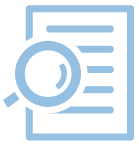Accessibility in RWTHmoodle

Accessibility in RWTHmoodle means that the learning platform can be found, accessed and used without difficulty by people with disabilities. The software must be designed in such a way that no one is excluded from using it. Many of the principles of accessible design increase usability for all users and can also be transferred to the development of websites and teaching/learning materials.
RWTHmoodle follows common accessibility standards to maximize inclusion and education for all users. However, the user interface can be customized in many ways by the user. In addition, lecturers and students individually create the content on the platform. It is therefore largely up to the users to know and observe the criteria for accessibility.

Table of content
1. General guidelines for barrier-free course design
2. Open self-study courses for the design of accessible Moodle course rooms
1. General guidelines for barrier-free course design
The poster "Moodle course design and accessibility" shows do's and don'ts for accessible course design. The overview is an adaptation of the "Designing for accessibility" poster on accessible website design produced by the UK Home Office. It has been adapted to the context of Moodle learning spaces by Patrik Grün. Both documents are licensed as Creative Commons (CC BY-NC-SA 4.0).
The guide lays out very clearly and concisely what to consider when designing accessible Moodle content. The document is helpful for users with:
- Autism Spectrum
- Screenreaders
- Visual impairments
- Dyslexia (reading and spelling disorder)
- Mental or motor impairments
- Hearing impairments
- Anxiety disorders
Note
2. Open self-study courses for the design of accessible Moodle course rooms
The University of Duisburg-Essen and the Humboldt University of Berlin have developed two open self-study courses on designing accessible Moodle course rooms. These self-study courses offer concrete advice on how to structure and design Moodle course rooms so that users with disabilities can use them without obstacles. As you will see, all users benefit from a clear course structure and a barrier-free design. Some of the content can also be transferred to the creation of teaching/learning materials.
- Designing accessible Moodle course rooms, self-study course, University of Duisburg-Essen: Select the option "Log in as a guest" when logging in to get visual access to the course room content as a guest. The course room has been licensed (CC BY-SA 4.0) and published as Creative Commons by the Moodle Competence Center of the UDE.
- Information and examples: Barrier-free Moodle, self-study course, Humboldt-Universität zu Berlin: Select the option "Inform yourself as an anonymous guest" when logging in to get visual access to the course room content. The course room has been licensed (CC BY 4.0) and published as Creative Commons by the HU Computer and Media Service.

Read more about:
- Checking the course room for accessibility
- Accessibility in Moodle
- Poster Moodle course design and accessibility by Patrick Grün
- Poster "Designing for accessibility" by Home Office UK
- Self-study course Designing accessible Moodle course rooms
- Self-study course Information and examples: Barrier-free Moodle
- Self-study course Digital Accessibility by ETH Zürich
- Self-study course Introduction to Accessibility by Moodle Academy
- Self-study course Accessible Teaching Basics by Moodle Academy
- Guide for accessible online videos (BIK) (only available in German)
- Hints for barrier-free design of documents (only available in German)
- Fundamentals of digital accessibility (only available in German)
- Link collection on the topic Accessible IT & Teaching in the Portal for Inclusion & Accessibility of RWTH Aachen University

